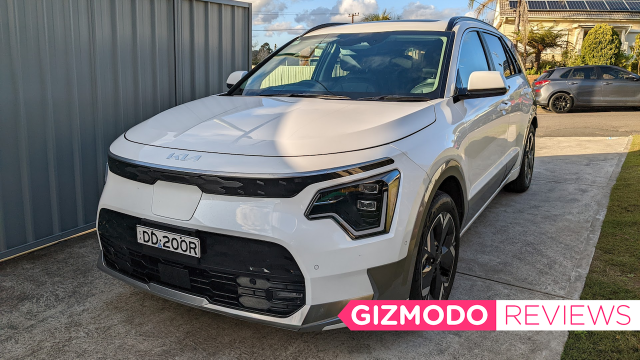The Kia Niro EV is the closest thing to my ideal electric car if I were to buy one.
Kia has enjoyed a lot of positive electric vehicle coverage over the past year with the launch of the beautiful EV6, a car that is, unfortunately, only shipping 500 units to Australia this year. It was a higher-priced SUV with a beautiful, Cyberpunk aesthetic, but it was all a bit much as we found in our review.
The Kia Niro, however, steers in the other direction. While the EV6 represents the height of Kia’s electric future, the Kia Niro represents the transition, built on a platform that allows for PHEV tech.
The Kia Niro EV offers compromises while the EV6 is all flare. I’d love to own the Kia Niro EV, however, value-conscious EV shoppers may be turned off by the price and range, especially when considering it against the cheap BYD Atto 3 or the similarly priced Polestar 2 (or even the Tesla Model 3).
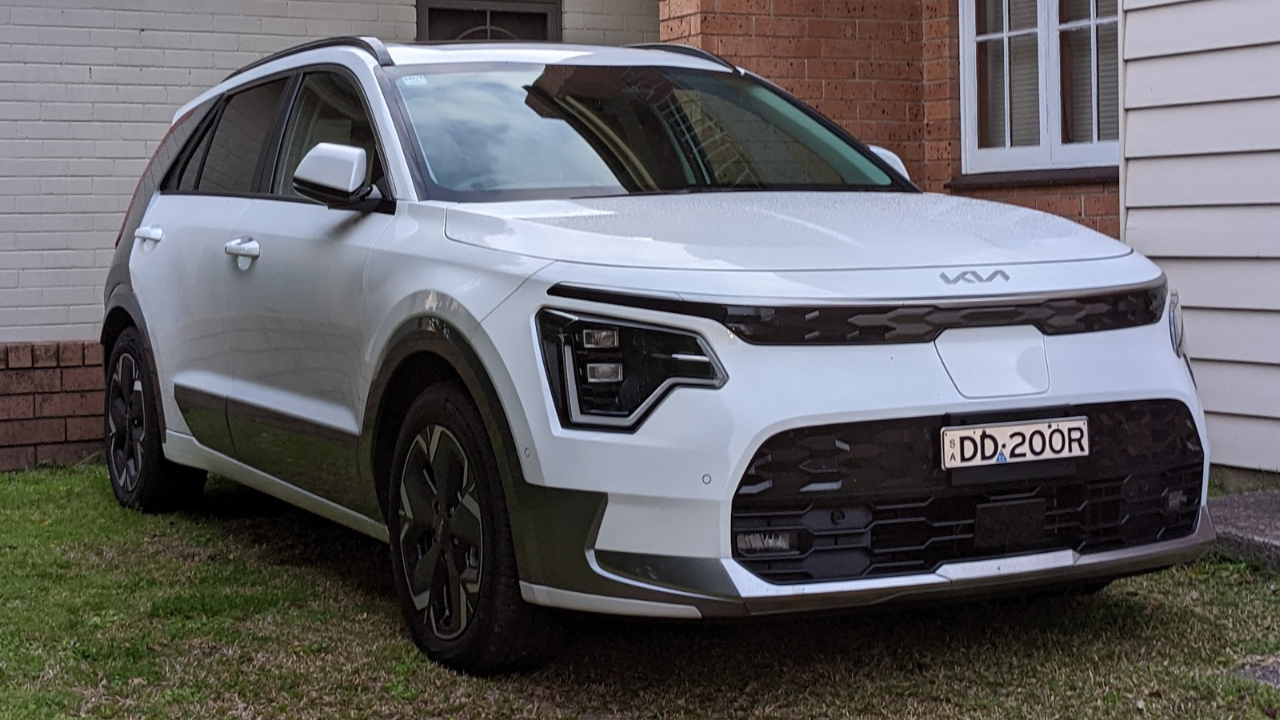
Size matters
EV enthusiasts may look away because of the wheel size. Every EV (and PHEV) I’ve reviewed up until this point has had large, thick wheels fitted, but the Niro’s are quite small (215/55 R17, versus the Polestar 2’s 245/45 R19 wheels, as an example).
Because of this, I felt less in touch with how the car drove on the road, however, it’s not a criticism that forced me to completely do away with the car. Actually, it’s the only major criticism I have, beyond the fact that it comes with a space for a spare tyre but not a spare tyre (the PHEV version, however, comes with an emergency tyre, which isn’t too abnormal).
It does feel quite sporty, despite the tyre concerns, especially when you move it from “eco” or “normal” modes (which sacrifice acceleration for range) and kick it into “sport” mode (which makes the car much speedier).
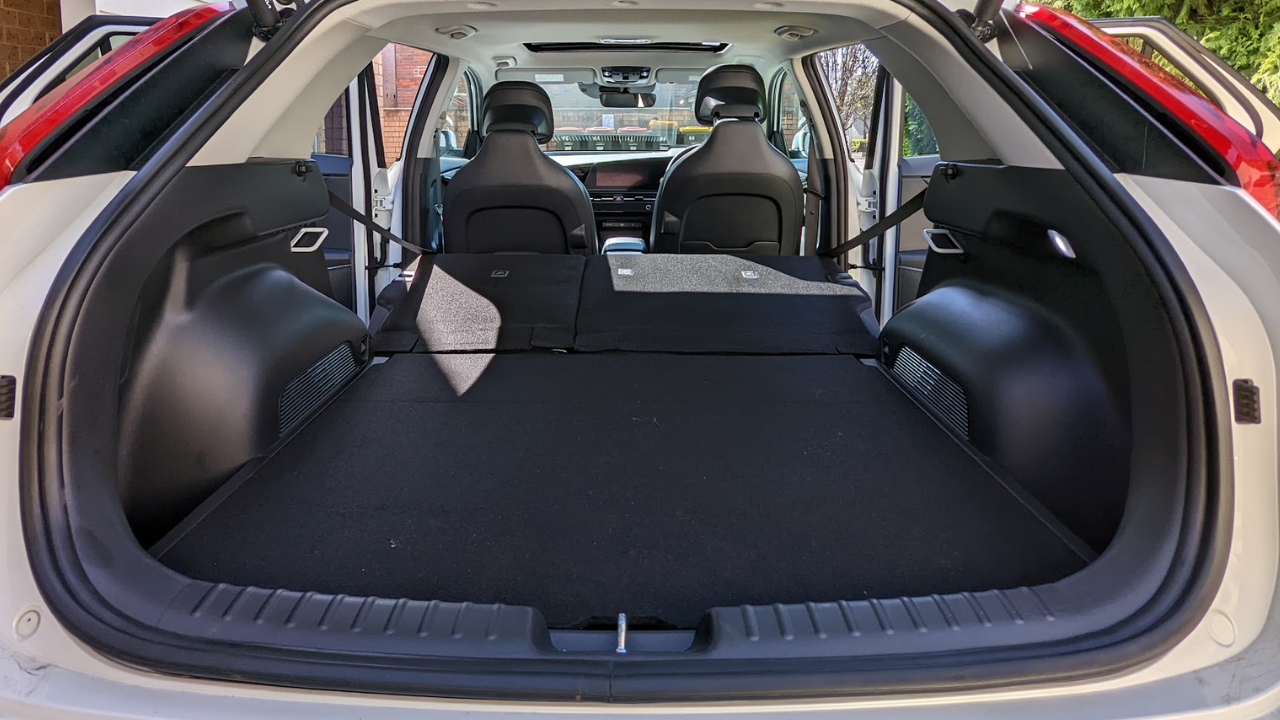
All of this said, it’s quite a delightfully small SUV, which is probably why the wheels are so small. It’s what I would consider to be an SUV/hatchback crossover, with not a great deal of space even when the backseats are folded down (though it seems to be a decent amount at the very least at 1,392L capacity, much greater than the Polestar 2 or the Model 3). It’s a comfortable size and it fits nicely into a small car park at a shopping centre (which I did, mind the parking job).
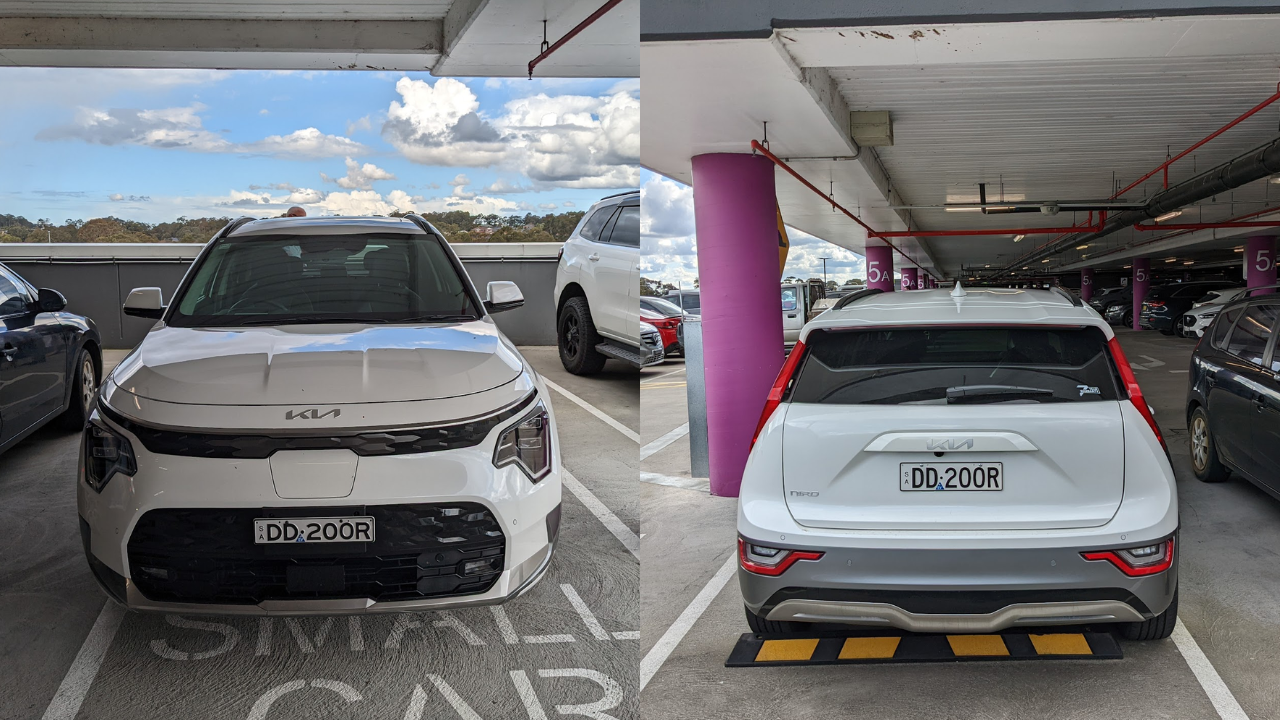
It may, however, be an uncomfortable size for families. The front seats feel terrific, spacious, warm and welcoming (they’re also heated, plus a heated steering wheel and two-zone climate control), but the backseats are cramped and feel very small. They’re fine, for sure, but they lack the comfort of the similarly priced Polestar 2.
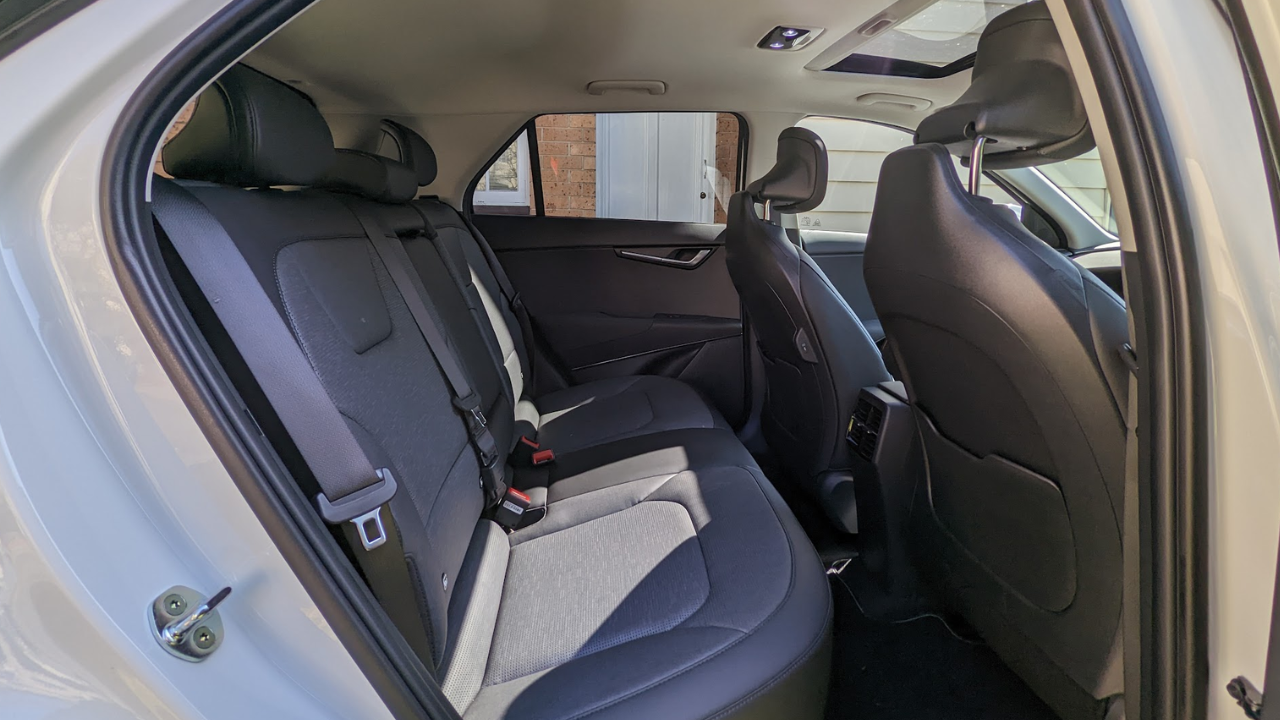
The car also does a terrific job of not feeling overwhelming. One of my biggest criticisms of the Kia EV6 (which uses a much bigger infotainment system than the Niro EV with the same aesthetic and shape) was that the cluttered dash just felt so massive and domineering over the experience, while the Tesla Model Y didn’t show enough.
These were opposing philosophies trying to achieve the same things: they both wanted the futuristic, next-step feel that you’d want from a new car running on new technology. The Kia Niro EV abandons this farce and feels more like a car you’d be used to.
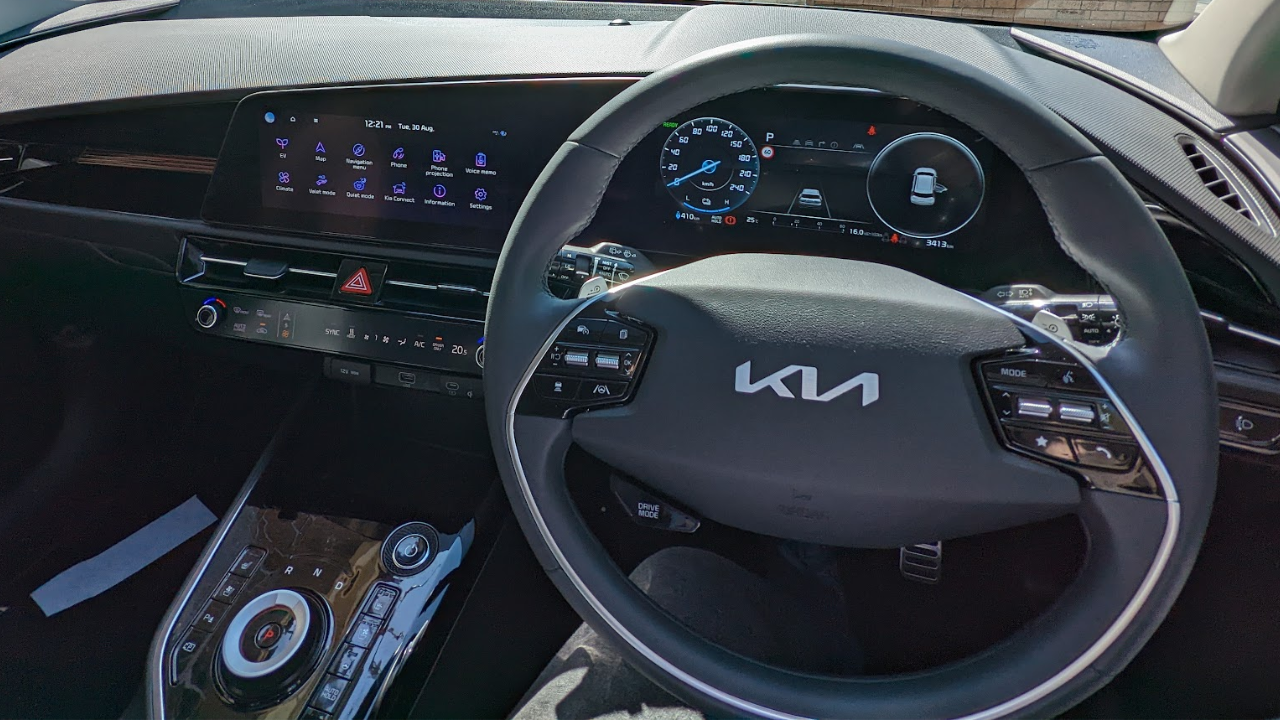
Which is, for a lot of people, an attractive proposition. I know Tesla’s bells and whistles are quite popular among enthusiasts, but there are many car drivers that would be hesitant to give up, for example, a behind-the-wheel instrument cluster.
All over, I wanted to use this section of the review to underscore what the Kia Niro EV is trying to achieve. I think it has done a terrific job, frankly.
Smarts and parts
This is my second time dealing with Kia’s smart operating system and, to be honest, I completely skipped it. With the EV6, I never used Apple CarPlay or Android Auto, but with this one, I used the Kia operating system on one drive and then immediately switched to Android Auto (powered by a Google Pixel 6a).
Kia’s operating system remains a blight on the experience, but this isn’t a surprise. I suspect that we’ll see Kia (and most automakers, for that matter) go the route of phone makers and adopt a native Android operating system specced and reskinned for their range of vehicles.
That being said, it can’t help but infiltrate the driving experience. Take the hologram (which is limited to the GT model), for example, which displays your speed, your speed limit (tied to your car’s inbuilt GPS) and your driving assistance indicators (lane assistance, distance control, etc).

Because the hologram speaks to the inbuilt GPS operating system, which is slow and doesn’t seem to have the correct speeds often, it displays the wrong speed limit indicators (and will go red if you surpass the car’s expected speed, scolding you for not driving in compliance).
Another example: when using the car’s reversing camera and indicator lines (perfectly fine and great to use), activated by a physical button on the centre console, you’ll be pulled from Android Auto or Apple CarPlay while using it. Once you’re done using it, you’ll need to tab the ‘Android Auto’ or ‘Apple CarPlay’ icon to reenter.
This may seem inoffensive, but more than once I was reversing onto a busy road and had to reactivate the Android Auto app to access Google Maps. My attention, in these quick moments, shouldn’t be spared between an operating system that thinks it knows better and my need to drive without distractions.
Let’s say something good about it though: during the drive, it shows you everything you need to know right in front of you, without needing to turn your head. Speed, speed limit (though often inaccurate), assistance indicators, the whole lot. That’s more than what I can say about the Tesla Model Y.
Additionally, charging ports (USB-C and USB-A) are available on the centre-console (along with a cigarette lighter and a wall socket under the back seats), however, if you’d like to use CarPlay or Auto, you’ll need to use the USB-A port. Not sure why Kia has limited itself here, but thankfully I had an adapter available.
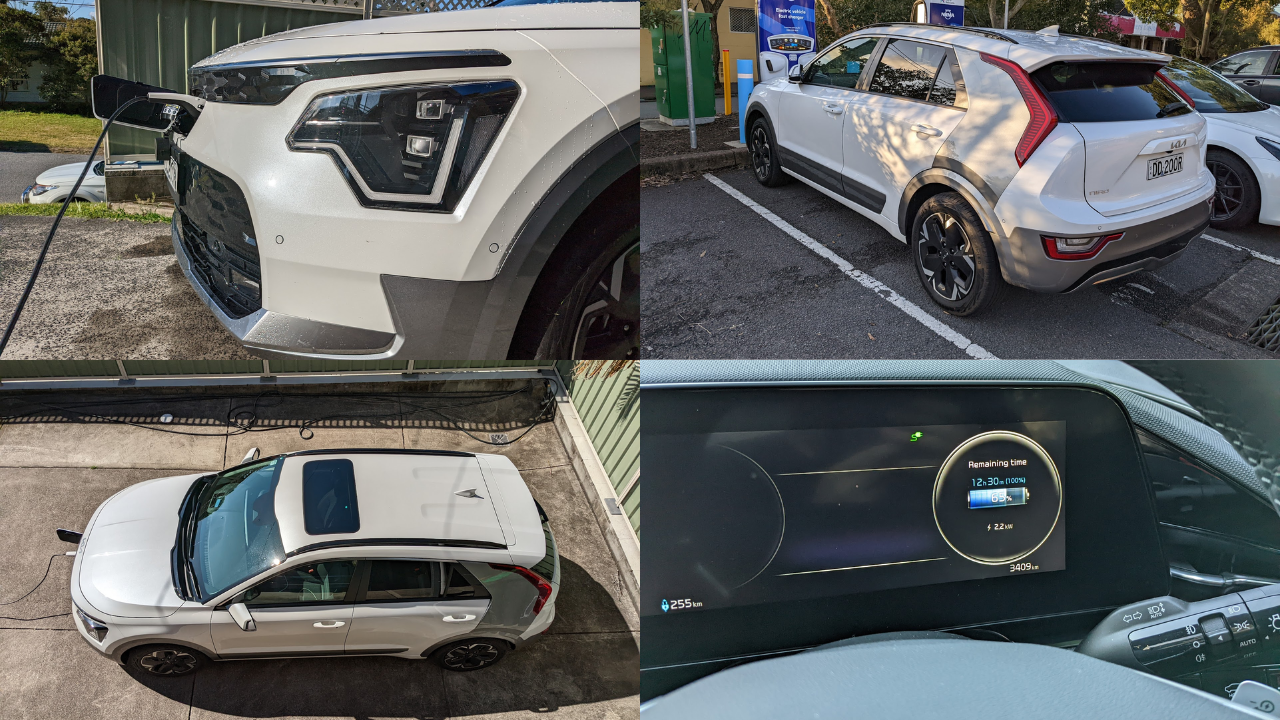
And a few more:
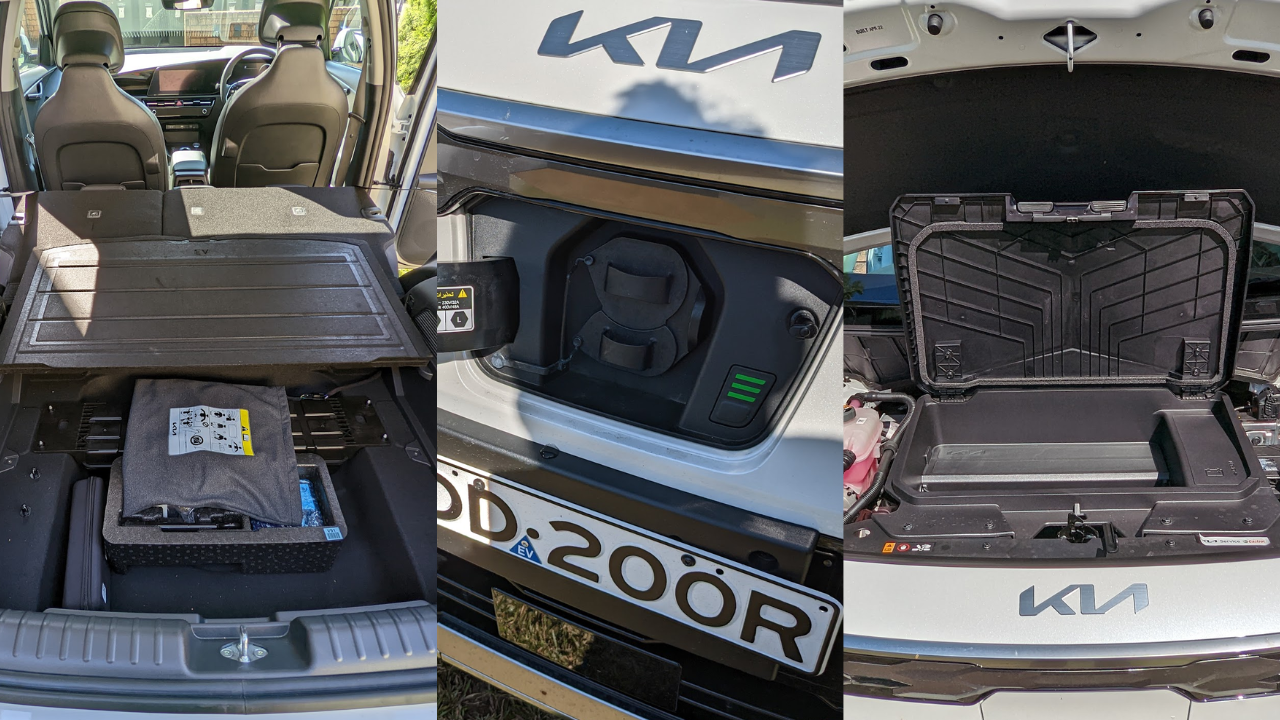
Range reflection
With a 460km WLTP range in a 64.8kWh battery, the Kia Niro EV promises range short of the Polestar 2 (478km) and the Tesla Model 3 (491km).
Now, I wouldn’t come down on it as hard if it were presented at a lower price (which is why I’m not too critical of the Polestar 2’s range against the Tesla Model 3), but the Kia Niro EV starts $1,500 above both cars.
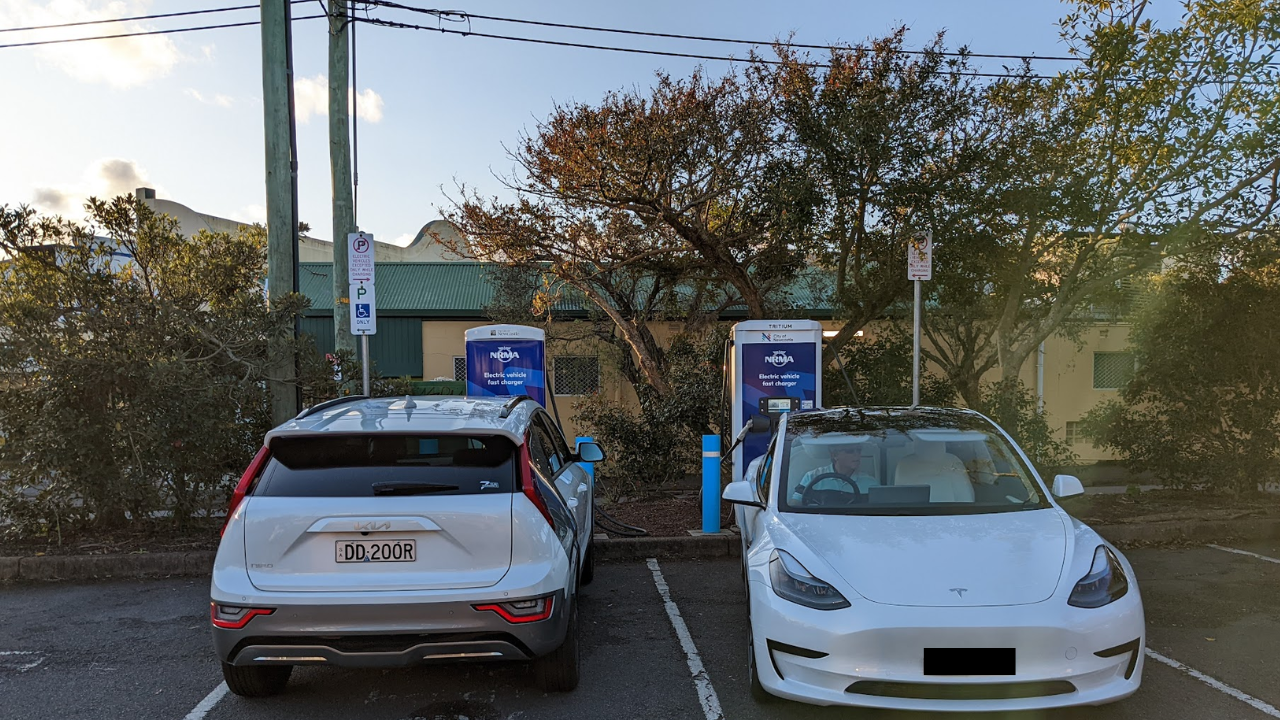
Added that the Niro doesn’t drive as well as the Polestar 2 and is a much more claustrophobic vehicle, it’s easy to be disillusioned by the car’s lacking range and then be worn down by many of the other features.
But 460km is still a fairly good range and I had no problems charging this thing after day-to-day stints. If price is your concern, then I would direct you to the BYD Atto 3, which offers 345km expected range at $45,063 (in the ACT).
Identity crisis
The difficulty with the Kia Niro EV is that it’s trying to compete with cars that are not only better (in a few ways) but also cheaper. It doesn’t offer any particular advantage over other EVs, bar perhaps its compact size and length, and it expects you to pay about $1,500 more for it than a Tesla or a Polestar.
The Kia Niro EV is a terrific car on all fronts, but I don’t think necessarily it works at this price point, especially with BYD entering the market with a similar car (with admittedly less range), just shy of $20,000 cheaper.
I’m excited to see if future generations of the Kia Niro will be priced similarly. Surely it can’t keep up with the giants in this price bracket, and soon enough a car like this will be made irrelevant by cheaper alternatives. I’m excited to see how the Niro will change as the market moves.
The Kia Niro starts at $65,300 and the GT model starts at $72,100.
Want more Aussie car news? Here’s every EV we’ve reviewed in the last two years, all the EVs we can expect down under soon, and our guide to finding EV chargers across the country. Check out our dedicated Cars tab for more.
